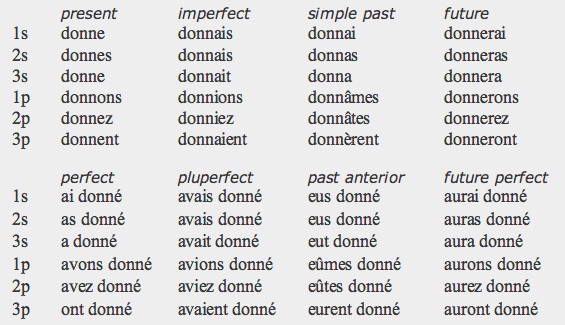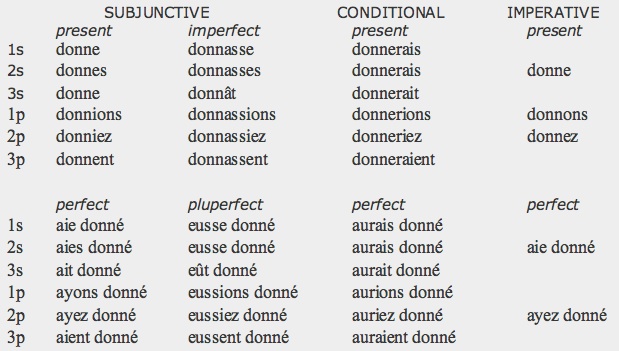An insatiable appetite for ancient and modern tongues


Classification: Indo-European, Italic, Romance.
Overview. French is the northernmost and the earliest attested of the Romance languages. Developed from the Latin spoken in northern Gaul after the fall of the Roman Empire, it experienced deep phonological changes, diverging more from Latin than its sister languages. From the end of the 17th century until after World War I, French has been the language of international diplomacy and culture replacing Latin in that role. Spoken in every continent as a first or second language, French is one of the major world languages.
Distribution. In Europe, French is spoken in France, Brussels and southern Belgium (Wallonia), West Switzerland (including Geneva), Luxembourg, and the Aosta Valley in Italy.
In America, French is predominant in the province of Quebec, in Canada; there are sizable minorities of French speakers in USA (northern New England, Louisiana) and in Haiti (where the majority speaks Creole). The language is favored in France overseas colonies in the Caribbean (Guadeloupe, Martinique, Saint Barthélemy, St. Martin and Saint-Pierre et Miquelon) and South America (French Guiana). In Northern and Western Africa, French is mainly a second language and a prestige language.
Speakers. French has about 80 million native speakers and around 40 million second-language speakers. Native speakers live in (numbers in millions):
France
Canada
Belgium
USA
Switzerland
Haiti
Luxembourg
Italy
62.0
8.0
4.0
1.8
1.5
1.0
0.5
0.1
Status. French is the official language of 28 countries. It is also one of the 23 official languages of the European Union and one of the six official languages of the United Nations.
Varieties. Historically, the main varieties of French had been: Francien (the dialect of Paris), Langue d 'Oil (northern and central France, and part of Belgium), Langue d'Oc (southern France) and Franco-Provençal (southeast France, Switzerland and Aosta valley in Italy). Francien has become the standard language displacing the Langue d 'Oil. The Langue d'Oc has survived as Occitan which is closely linked to Catalan. Provençal is a literary form of Occitan.
Periods
9th-13th c. CE. Old French
14th-15th c. CE. Middle French
15th c. CE-present. Modern French
Oldest Documents
-
842.Oath of Strasbourg, sworn by two of Charlemagne's grandsons, a transitional text between Vulgar Latin and Old French.
-
880.Sequence of Saint Eulalia, a short hagiographic text from Northern France or Southern Belgium.
Phonology
Vowels (16). French has 12 oral vowels and four nasal vowels (ɛ̃, œ̃, ɑ̃, ɔ̃) as well as several diphthongs. All front vowels contrast unroundedness versus roundedness.

Consonants (20):

-
[ʁ] is a strong r sound pronounced as an uvular fricative or uvular trill. [ɥ] is a labialised semi-vowel present in some diphthongs, pronounced like [j] followed by [w].
Stress: it falls on the last syllable of the word. Word boundaries tend to be blurred within phrases while phrasal boundaries are clearly marked.
Script and Orthography
French is written with a Latin script composed of 26 letters supplemented with three accent markings (acute, grave and circumflex). Equivalents in the International Phonetic Alphabet are shown between brackets.

-
•nasal vowels are indicated by a following n/m.
-
•[ø] is represented by eu.
-
•[œ] is represented by oe/eu.
-
•[u] is represented by ou.
-
•é represents [e].
-
•è and ê represent [ɛ].
-
•[ʃ] is represented by ch.
-
•[ɲ ] is represented by gn.
-
•[ɥ] is the sound of u before a vowel.
-
•k and w are found only in loanwords.
Morphology
-
Nominal
-
•gender: masculine, feminine. Feminines are usually made by adding e to the masculine form (e.g., grand, grande), a process that is frequently accompanied by phonetic changes at the end of the word (cruel, cruelle; jaloux, jalouse; acteur, actrice, etc). Adjectives ending in e have the same masculine-feminine form (e.g., large).
-
•number: singular, plural. Plurals are formed mainly by adding the suffix -s, but those ending in -al change to -aux, those ending in eau, au, eu, add -x. Nouns ending in s, x, z do not change in the plural. Some examples are:
-
homme (‘man’) → hommes (‘men’)
-
cheval (‘horse’) → chevaux (‘horses’)
-
eau (‘water’) → eaux (‘waters’)
-
feu (‘fire’) → feux (‘fires’)
-
bois (‘wood’) → bois (‘woods’)
-
noix (‘nut’) → noix (‘nuts’)
-
nez (‘nose’) → nez (‘noses’)
-
Most plurals (including those made by adding -s) are distinguished orthographically but not phonetically.
-
•pronouns: personal, possessive, demonstrative, reflexive, interrogative, relative.
-
Personal pronouns have subject forms that always precede the verb, they are genderless except for the 3rd person singular. They have also direct object and indirect object forms as well as disjunctive ones. The latter are strong forms used in isolation and in emphatic positions. Possessive pronouns distinguish gender and number of the possessed and are always preceded by the definite article (the order in the table is m.s., f.s., m.p. f.p.) .

-
Direct and indirect object pronouns are identical except for the 3rd person. Le and la are the masculine and feminine direct object forms for the 3rd. singular while lui is the indirect object pronoun for both genders; les is the direct object pronoun for the 3rd. plural masculine and feminine while leur is the corresponding indirect object form.

-
Demonstrative pronouns have proximal and distal forms that distinguish gender and number. There is also a demonstrative adjective (‘this/that’): ce/cet (m.s.), cette (f.s.), ces (common gender, plural).
-
Interrogative pronouns: are qui (‘who?'’), que (‘what?’), qu'est-ce qui/que (‘what?’), lequel (‘which?’). Qu'est-ce qui is used as a subject. Que and qu'est-ce que are for the direct object; the first form requiring an inversion of the subject:
-
Que faites-vous?
-
Qu'est-ce que vous faites?
-
Both mean ‘what are you doing?’
-
•articles: French has indefinite, definite and partitive articles. The indefinite article forms are un (m.s), une (f.s), des (m.p., f.p). The definite article forms are le (m.s), la (f.s), les (m.p., f.p). The partitive article is used with uncountable nouns, its forms are du (m.s), de la (f.s), de l' (m.s, f.s, in front of a vowel), des (m.p., f.p).
-
Verbal
-
•person and number: 1s, 2s, 3s; 1p, 2p, 3p
-
•tense: present, imperfect, simple past, future, and compound tenses (perfect, pluperfect, past anterior, future perfect). Compound tenses are formed with an auxiliary verb (generally avoir [‘to have’], but in some cases être [‘to be’]) + past participle. The conjugation of the verb donner ('to give') in the indicative mood is:

-
The simple past is not used in spoken French, it is only a literary form. The three singular persons of the present and imperfect as well as their third plural are homophonic in most verbs, though distinguished in writing. Thus, the conjugated verb requires always the presence of a personal subject pronoun.
-
•mood: indicative, subjunctive (present and imperfect), imperative, conditional. Compound tenses of the non-indicative moods use the same auxiliaries as the indicative (avoir or être).

-
The imperfect subjunctive is only a literary form. The past imperative is very rare, and used only to give a command for something that must be done before a certain time.
-
•voice: active, passive.
-
•non-finite forms: infinitive (present and past), present participle, past participle.
-
present infinitive: donner
-
past infinitive: avoir donné
-
present participle: donnant
-
past participle: donné
Syntax
Literary French word order is Subject-Verb-Object (SVO); however everyday speech is flexible and several other orders are possible. As the case system of Latin no longer exists in French, prepositions are used to indicate syntactical relations.
Nouns are usually accompanied by determiners (articles, demonstratives, possessives) carrying information about gender and number which are not consistently marked on the noun. Similarly, in the verbal phrase subject pronouns are obligatory because four, out of the six, persons are homophonic.
-
J'aime la mer ('I love the sea')
-
S V O
-
j' (je before a vowel): subject pronoun (1st. sg.)
-
aime: verb (1st/3rd. sg. of aimer)
-
la: definite article, fem. sg. (determiner)
-
mer: noun (fem. sg.)
-
Il aime les mers ('He loves the seas')
-
S V O
-
il: subject pronoun (3rd. sg. masc.)
-
les: definite article plural (masc. sg.) (determiner)
-
mers: noun (fem. pl.). Pronounced [mer].
-
La mer, je l'aime ('The sea, I love it')
-
O1 S O2 V
-
l' (la before a vowel): object pronoun
-
Je l'aime, la mer ('I love it, the sea')
-
S O1 V O2
-
Here, the form of the verb is identical in the 1st and 3rd persons of the singular, requiring an obligatory subject pronoun. The gender of the noun mer is not obvious and its plural is not distinguished in speech as the final -s is silent; a determiner is thus required. When the direct object is displaced, as in the last two sentences, a clitic object pronoun referring to it is needed (here it is l')
For interrogation there is a question-forming particle, est-ce que, which is placed at the beginning of the sentence without changing its word order. When interrogative words are used, the order subject-verb is inverted in the literary language but can be avoided in speech:
-
Le train part demain (declarative)
-
Est-ce que le train part? (interrogative particle)
-
Quand part le train? (interrogative word and inversion)
-
Quand le train part? (interrogative word without inversion)
-
Le train part quand? (interrogative word without inversion)
-
Quand est-ce que le train part? (interrogative word + particle without inversion)
A negative statement usually involves a double negation, combining a pre-verbal element (ne) with a post-verbal one (pas, plus, point, rien, personne, jamais). In informal speech ne is frequently omitted:
-
Le train part (affirmative)
-
Le train ne part pas (negative formal)
-
Le train part pas (negative informal)
Lexicon
The basic vocabulary derives from the Latin spoken in Gaul. The original Latin-derived stock was supplemented by new borrowings from Latin that didn't experiment the phonological changes proper of French. There are also significant loanwords from Greek and Germanic (the Francs were of Germanic origin). Nowadays English is the principal source of loanwords.
Basic Vocabulary
one: un
two: deux
three: trois
four: quatre
five: cinq
six: six
seven: sept
eight: huit
nine: neuf
ten: dix
hundred: cent
father: père
mother: mère
brother: frère
sister: sœur
son: fils
daughter: fille
head: tête
face: visage
eye: œil
hand: main
foot: pied
heart: cœur
tongue: langue
Key Literary Works (forthcoming).
-
© 2013 Alejandro Gutman and Beatriz Avanzati
Further Reading
-
-Le Grand Livre de la Langue Française. M. Yaguello. Seuil (2003).
-
-The French Language Today: A Linguistic Introduction. A. Battye, M. A. Hintze & P. Rowlett. Routledge (2000).
-
-French: A Linguistic Introduction. Z. Fagyal, D. Kibbee & F. Jenkins. Cambridge University Press (2006).
-
-A Reference Grammar of Modern French. A. Judge & F. G. Healey. Edward Arnold (1985).
French

Address comments and questions to: gutman37@yahoo.com
MAIN LANGUAGE FAMILIES
LANGUAGE AREAS
Languages of Ethiopia & Eritrea
LANGUAGES by COUNTRY
LANGUAGE MAPS
-
• America
-
• Asia
-
Countries & Regions
-
-
Families
-
• Europe
-
• Oceania